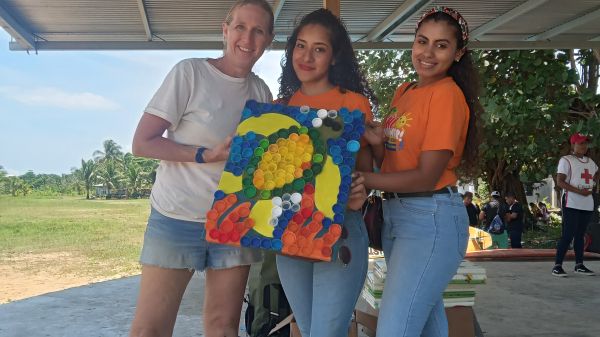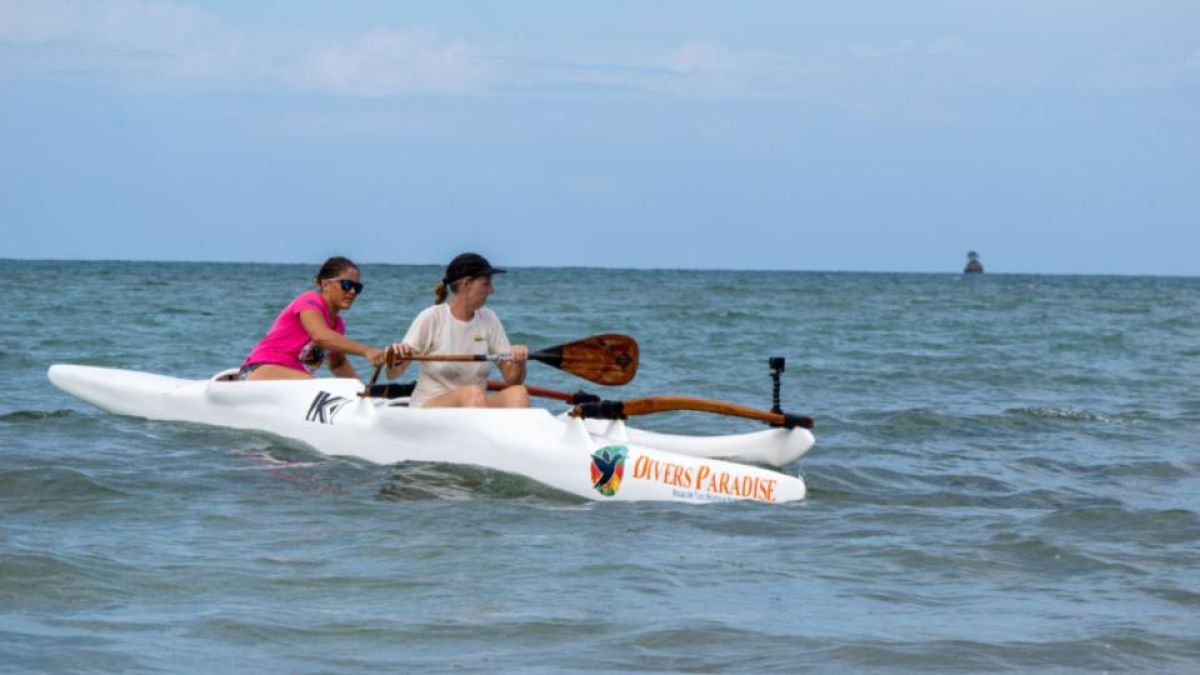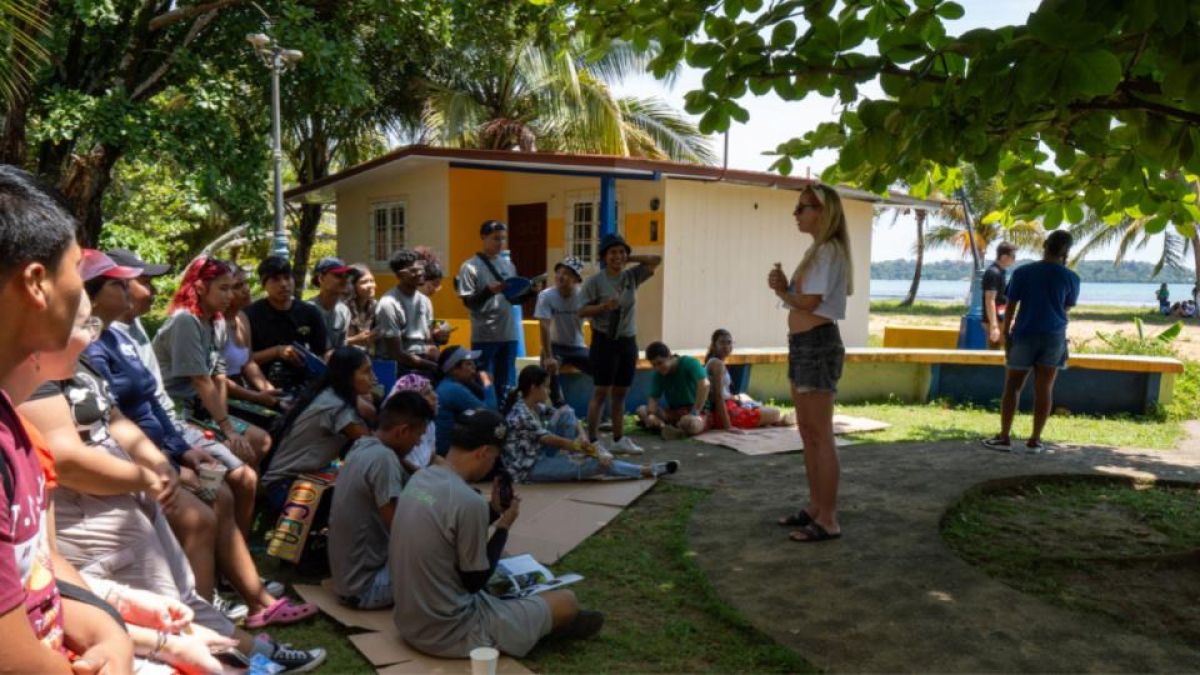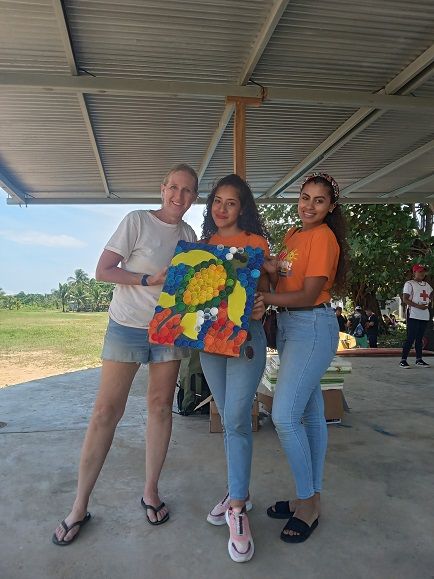Engaging the Bocas del Toro Community in Climate Change Action Through Aquatic Sports

Each month, NAAEE shares narratives from the CEE-Change Fellows as they implement their community action projects and work to strengthen environmental education and civic engagement capabilities, all supporting the mission of cleaner air, land, and water. Join us on their journey! The Civics and Environmental Education (CEE) Change Fellowship is NAAEE’s newest initiative to support leadership and innovation in civics and environmental education in North America. This ee360+ program is a partnership between NAAEE, U.S. EPA, and the Cedar Tree Foundation.
The CEE-Change Fellowship has been an experience that has challenged me to gain new skills, try new endeavors, and push myself to build relationships with other organizations and individuals interested in turning talk into action. One of the things that attracted me to the fellowship is the Community Action Project. I am the only community coordinator in my organization, and I was looking for a way to support my community engagement work on Isla Colón in Bocas del Toro, Panamá.
Evolution
Isla Colón is the main island in the Bocas del Toro archipelago on the Caribbean coast of Panamá. Tourists fly into the only airport and residents come to purchase groceries, work, and attend high school. The island where I live is undergoing rapid change due to urban development. The only road on the island is being expanded and will circumvent the island. Biodiversity is at risk due to these new developments, and nature is rapidly causing additional changes to the island. Isla Colón is only a few feet above sea level. The new road expansion is encroaching on idyllic Caribbean beaches and coves, while the sea is eroding the shores and claiming more of the island. A report by the Panama Ministry of the Environment predicts a sea-level rise of 0.5 to 0.75 meters in the Bocas del Toro region over the next few decades (Miambiente 2024), and another report states that Bocas province has the least capacity to adapt to climate change (Miambiente 2021).

CEE-Change Fellow Holly Hummel paddled a racing kayak at the Brazadas for the Ocean event. Photo credit: Osmy Martinez.
This is where the CEE-Change Fellowship Community Action Project comes in. There is a need to engage the local Bocas del Toro community in adapting to climate change. Brazadas por el Océano is a unique event that uses ocean sports to raise awareness of climate threats to the ocean and to build a movement of citizens engaged in civic action to address these threats. I joined efforts with Gerald Abrego, leader of Bocas Ocean (a community of university students concerned for the environment), and Ana Torres of Swim with Ana. Our goal was to bring together people with little or no experience in aquatic sports to build a network of citizens engaged in ocean conservation efforts. The majority of participants were from nearby Indigenous communities, university students, and out-of-town visitors who traveled to Isla Colón to participate in a day-long event filled with educational talks, networking with community-based organizations, and sports. One hundred and fifty people attended environmental education lectures. They tried several sports, including surfing, snorkeling, and racing canoes, also called cayucos in Spanish, led by volunteer instructors.

A public talk by STRI about algae on Playa Istmo. Photo credit: Osmy Martinez

Surf Instructor Reinaldo Baker with participants in the water at the Brazadas For the Ocean event Photo Credit: Osmy Martinez
Inclusion in My Community Action Project
In August 2023, I met fellow CEE-Change Fellow Joy Munthali of Green Girls Platform and learned how she created environmental education materials in braille. I knew I needed to find a way to include people living with disabilities in my community action project. I decided to consult with local citizens to form an inclusion committee to consider how we could design activities to serve community members who are often absent from community events. After consulting with the committee, it was decided we would invite Allison, an early childhood educator, to organize and lead an ocean-themed sensory workshop for autistic children. The children attended a closed invitation-only workshop during Brazadas and presented a beautiful painting of a sea turtle made with recycled plastic bottle tops. This experience made me aware of the work my organization needs to do to actively look for and include diverse voices and participants in our community engagement work.

A group photo featuring CEE-Change Fellow Holly Hummel and two members from the Bebe Crecer Sensory Workshop: Reusing plastic waste to make art at the Brazadas For the Ocean event. Photo Credit: Edison Rodriguez

Volunteers at the Brazadas For the Ocean event are getting the stand up paddle boards ready for the water. Photo Credit: Ana Torres
What’s Next?
"When is the next event?" several people asked as Brazadas por el Océano was finishing up. They had just come out of the ocean, where we had been paddling, practicing surfing, and snorkeling in the shallow waters of Playa Istmito. "Wow," I thought as I took a moment to relax after a busy day of logistics and problem-solving trying to pull off the event. I had just enjoyed a paddle in a racing canoe and a brief surf lesson with local surfer, Reinaldo. It ended up being a really fun day. I wasn’t quite ready to dive into planning another event quite yet, but I knew it was an activity I wanted to repeat soon.

A group photo of CEE-Change Fellow Holly Hummel with Gerald and Ana organizers of Brazadas for the Ocean event. Photo Credit: Holly Hummel
On the Horizon
An excellent question! One community member, Zuly, approached me with enthusiasm to host a small event for youth from her community on Isla Bastimentos. We plan to start soliciting donations and support from hotels and businesses located on Red Frog Beach, a popular beach on Isla Bastimentos within walking distance of the communities we will invite, and build interest and momentum to bring a group of 30 children from a nearby Afro-Caribbean and Indigenous community. I am confident that the lessons learned and experiences in planning Brazadas por el Océano will help us host a second successful event.